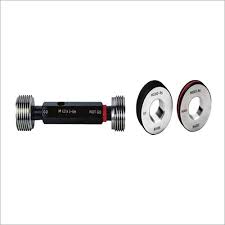Metric thread gauges play a crucial role in ensuring accurate and precise thread measurements in various industries, including manufacturing, automotive, and engineering. Regular maintenance and calibration of these gauges are essential to maintain accuracy, prolong their lifespan, and prevent costly errors in production. In this guide, we will explore the best practices for maintaining and calibrating your metric thread gauges to ensure they function optimally.
Why Maintenance and Calibration Matter
Thread gauges are precision instruments that must remain in perfect condition to provide accurate measurements. Over time, wear and tear, contamination, and improper handling can affect their accuracy. Regular maintenance and calibration ensure:
- Consistent Measurement Accuracy: Prevents deviations that could lead to defective parts.
- Extended Lifespan: Proper care helps avoid premature wear and damage.
- Compliance with Standards: Ensures adherence to industry and quality control standards.
- Cost Savings: Reduces the risk of production errors and rework.
Proper Maintenance Practices for Metric Thread Gauges
1. Keep Gauges Clean
Dirt, dust, and debris can accumulate on thread gauges, leading to inaccurate readings. Follow these steps to keep them clean:
- Use a soft, lint-free cloth to wipe off any dirt after each use.
- For thorough cleaning, use a mild solvent or isopropyl alcohol to remove grease and contaminants.
- Avoid using abrasive materials that can scratch or damage the surface.
- Ensure the gauges are completely dry before storage.
2. Proper Storage
Storing your metric thread gauges correctly helps prevent damage and wear. Follow these guidelines:
- Store gauges in a protective case or designated compartments to prevent them from knocking against each other.
- Keep them in a dry and temperature-controlled environment to prevent corrosion and warping.
- Apply a light coating of anti-corrosion oil if they are stored for an extended period.
- Label storage areas clearly to prevent mishandling or misplacement.
3. Handle with Care
Improper handling can lead to damage and reduced accuracy. Always:
- Avoid dropping the gauges, as impact can affect their precision.
- Use gloves when handling to prevent oil and moisture from transferring to the gauge.
- Never force a gauge onto a thread; if it doesn’t fit, inspect for issues rather than applying pressure.
4. Regular Inspection
Periodic visual and functional inspections help identify early signs of wear or damage:
- Check for scratches, dents, or deformations on the threads.
- Look for rust or corrosion, especially in humid environments.
- Ensure the gauge still fits properly within tolerance limits.
Calibration of Metric Thread Gauges
Calibration is a critical process that ensures your thread gauges remain accurate over time. Follow these steps for proper calibration:
1. Establish a Calibration Schedule
How often you calibrate your thread gauges manufacturer depends on usage frequency and industry requirements. A general recommendation is:
- High-usage gauges: Every 3 to 6 months.
- Moderate-usage gauges: Every 6 to 12 months.
- Low-usage gauges: Annually or as needed.
Always follow your company’s quality control guidelines or industry standards when setting a calibration schedule.
2. Use a Certified Master Gauge
A certified master gauge with a known tolerance is essential for accurate calibration. Compare your working gauge against the master gauge to detect any discrepancies.
- Ensure both the master gauge and the working gauge are clean before calibration.
- Verify the fit between the gauges without applying excessive force.
- Record any deviations and take corrective actions if necessary.
3. Measure Against a Standard Calibration Device
Using specialized measuring tools, such as a coordinate measuring machine (CMM) or an optical comparator, provides precise calibration results.
- Place the thread gauge under the device and measure its dimensions.
- Compare the readings against the original specifications.
- If the gauge is out of tolerance, it may need regrinding or replacement.
4. Document Calibration Results
Maintaining detailed calibration records is essential for quality control and compliance with industry standards. Include:
- Date of calibration
- Measurement results
- Any deviations from the standard
- Corrective actions taken (if applicable)
- Technician’s name or initials
Keeping accurate records helps track the gauge’s performance over time and ensures compliance with ISO or other industry standards.
5. Replace Worn-Out Gauges
Even with proper maintenance, thread gauges will eventually wear out. Replace them when:
- Calibration results show excessive deviation from the standard.
- Visible damage or deformation is present.
- The gauge no longer fits properly within the required tolerance.
Using a worn-out gauge can lead to inaccurate measurements, defective products, and costly errors in production.
Conclusion
Proper maintenance and calibration of metric thread gauges are essential for ensuring accuracy, prolonging lifespan, and maintaining industry compliance. By following best practices—such as keeping gauges clean, storing them properly, handling them with care, and establishing a regular calibration schedule—you can ensure that your gauges perform optimally and deliver precise results. Implement these measures in your workflow to improve efficiency, reduce errors, and enhance overall quality control in your operations.
 WhatsApp Us Now
WhatsApp Us Now





